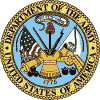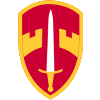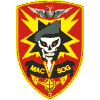| |
|
|
|
Samuel Kamu Toomey, III
Major
HQ, MACV-SOG, MACV Army of the United States Independence, Missouri December 30, 1935 to January 24, 1974 (Incident Date November 30, 1968) SAMUEL K TOOMEY III is on the Wall at Panel W37, Line 15 See the full profile or name rubbing for Samuel Toomey |
  |
  |
STILL REMEMBEREDA memorial from one who wore his MIA bracelet,Margie Olds olds07@aol.com |
A Note from The Virtual WallMajor Samuel Toomey entered the Army in April 1956 after service in the Marines. In Vietnam, Toomey was assigned to Headquarters, MACV-SOG - the "Studies and Observation Group" (MACV-SOG). Despite its innoculous name, MACV-SOG was engaged in a variety of unconventional warfare tasks, to include ground reconnaissance and surveillance missions in Laos and Cambodia. Relatively few people were actually assigned to the Studies and Observation Group; most personnel were formally assigned to the Special Forces and were informally sent to work at MACV-SOG. This approach was very similar to that used with other clandestine organizations, such as the "Raven FACs" who worked in Laos and the Air Force personnel who operated close-hold radar stations situated within Laos itself. It served several purposes, not least being the low profile usually associated with any unit which has only a handful of people.MACV-SOG's subordinate structure consisted of three area commands - Command and Control North, C&C Central, and C&C South - each with several operating bases located within their assigned areas. On November 30, 1968, Major Toomey - by one report, the C&C North Operations Officer - accompanied a team into Laos. The team consisted of six Americans (seven counting Toomey) and the Vietnamese crewmen who flew the helicopter, a UH-34 (BuNo 144653) belonging to the 219th VNAF Squadron - 11 men in all. The Americans were
In March 1989 the crash site, located about 35 kilometers west of Khe Sanh, was excavated and fragmentary remains recovered. Although the only individually identifiable remains came from SGT Fitts, the Armed Services Identification Review Board concluded that all available evidence indicated the 11 men aboard the aircraft had died in the crash and that the recovered remains, although individually unidentifable, comprised what could be recovered of them. The comingled remains were buried in Arlinton National Cemetery. |
| Contact Us | © Copyright 1997-2019 www.VirtualWall.org, Ltd ®(TM) | Last update 08/15/2019. |